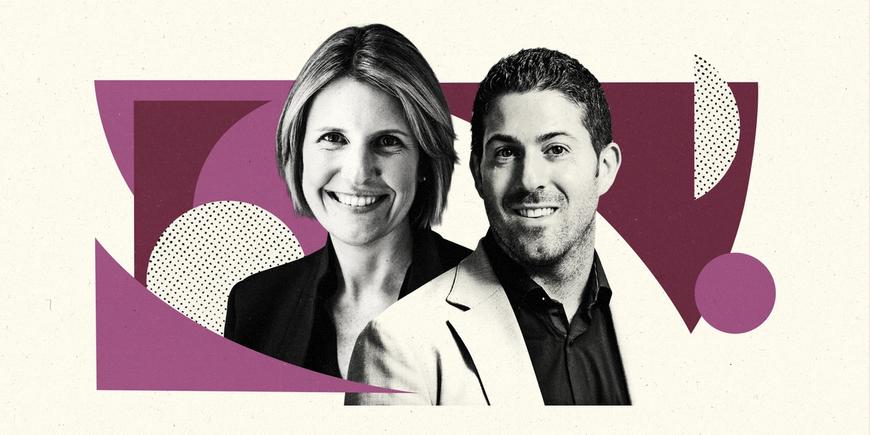The Mistakes That Derail Your Startup Sales Calls
Whether you’re a founder or AE, here’s advice we’ve honed from hundreds of coaching sessions.

Primary’s go-to-market team invests significant time each week reviewing sales call recordings and coaching founders and their teams on where they can improve.
300+ sales calls per year later, we’ve summarized the most common improvement areas so that any seller—regardless of whether you’re an early-stage founder or a growth-stage account executive—can keep them in mind.
Establish a “run of show” and gut-check it with the customer at the start of the call.
Firstask the customer why they took your call and what they hope to get out of it. Once that is established, spell out how you intend to use the time and gut-check that your proposed agenda resonates. Determine if the customer has a hard stop and respect it if they do (and be sure to reserve the final few minutes to establish next steps before they abruptly drop off the call). Finally, if the customer brings multiple stakeholders to the call, be sure not to sacrifice five full minutes for introductions; ask your main quarterback to quickly introduce other participants to keep things moving.
“I know we only have 30 minutes scheduled; do you have a hard stop? Here’s how I’d like to use the time based on what you just shared: I’ll give you a quick introduction to our business to give you some context, but then I’d really love to dig in on your role, organization, and current pain points. From there, we can do a deeper dive on our company to explore whether there’s a potential fit and use our final few minutes to determine if there’s a good mutual fit to continue the conversation.”
Avoid the “show up and throw up” (but also avoid an interrogation!).
The most common pitfall we see is sellers doing the majority of the talking. Tools such as Gong provide great insights around precisely how much airtime you’re hogging, but even in the absence of such tools, you can listen to your own recordings and hold yourself accountable. Obviously it can be tough to get the customer speaking without any context on your product (and you need to avoid the alternative end of the spectrum, the “interrogation!”), but we recommend starting with a quick summary overview and providing more context after the qualification and discovery portions of the call. When you do present the more detailed overview, take a breath! Make sure you’re regularly pausing throughout your slides to provide space for questions—and if engagement and energy feel low, cold-call meeting participants! “Don, as a potential technical sponsor for this solution, does that resonate?”
Articulate your ideal customer profile, and try to create some FOMO around it.
When presenting your initial business summary, clearly articulate your ideal customer profile (“ICP”) and be sure to do so in an aspirational way! For scaled companies, benchmarks and diagnostics can be a powerful way to demonstrate value.
“We are a great solution for mid-market ecommerce players who really want to take their customer experience to the next level. I’m not sure where customer experience sits on your priority stack though, and if you aren’t that focused on customer experience, this probably isn’t for you.” —who would tell you they aren’t focused on this!?
Qualify the deal!
Sellers often rush to qualify a deal in the final five minutes of a call. Start your qualification process immediately after your (quick!) summary overview. Start with a framework and follow it; we love BANT (budget, authority, need, timing) because of its simplicity. A helpful general rule of thumb is that if you have three of four BANT criteria, you probably have an interesting prospect. If you’re wildly off-base on BANT, call it! Would someone else on their team be a better candidate for the conversation? If the organization very blatantly isn’t a good fit for the sale, does the prospect have anyone else in their network who might be a good fit?
Develop a v1 stakeholder map.
As you proceed with your BANT qualification, get a feel for all of the stakeholders who would be involved in an evaluation and purchasing decision. Take detailed notes on their names and titles. As you hold more meetings and develop pattern recognition, ask proactive questions, e.g. “I noticed you didn’t mention a procurement team. Do you have a formal team or process?”
Avoid getting bogged down in pricing details.
Invariably the customer will ask you about pricing. Our favorite answer? It’s never about price; it’s always about value! Offer the customer visibility into your pricing heuristic and the levers that impact pricing, and then quickly move the discussion to value framing…
Understand business case framing so you can better position pricing later in the process.
Ask the customer how they would think about presenting an ROI case for your solution. What would need to be true for you to feel good about asking for buy-in for our solution? To help get an even richer sense for how decisions get made, ask the customer to walk you through a recent example of software they procured and how they built the business case to get it approved.
Tailor your long-form pitch to what you learned during discovery.
Use the information you just learned to your advantage! Customize your longer-form pitch to incorporate the tidbits you just collected (and refer back to specific people who broached certain points when relevant).
Do your best to secure and schedule the next meeting before you get off the phone.
Even if the follow-up meeting ultimately gets pushed, it’s powerful to have it on the calendar.
Take detailed notes and send a prompt follow-up referencing specifics of the conversation.
There is nothing worse than a generic follow-up email, especially if you’ve said something along the lines of “I’ll have to get back to you on that” during your call. Be detailed and highly tailored with your follow-up notes.
Ask for introductions!
While the pitch is fresh in the prospective customer’s mind, ask them if there are other people in their network who might benefit from learning what they might hear about?

